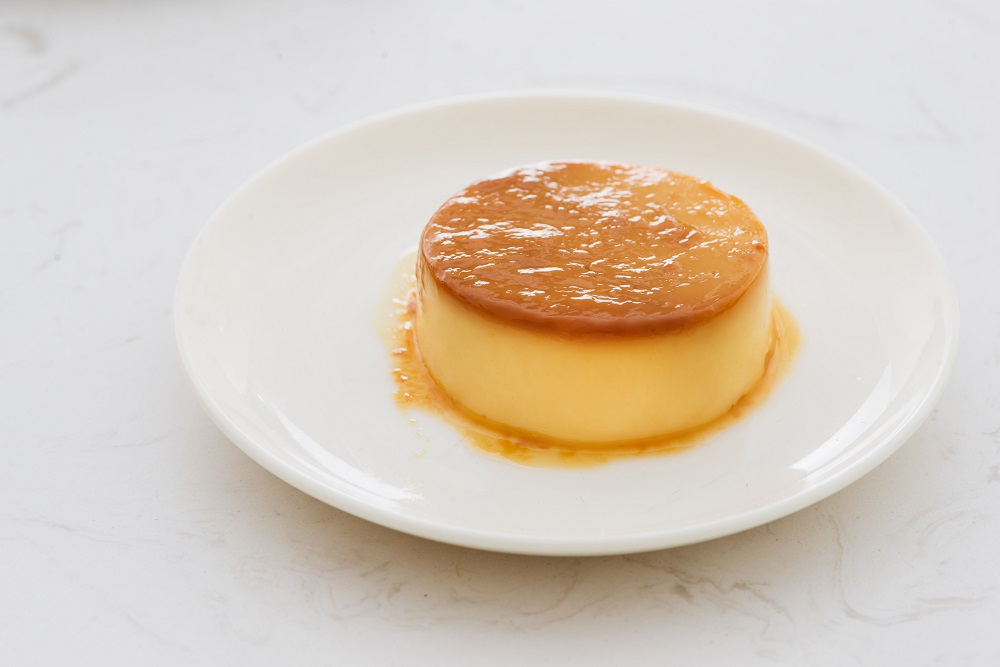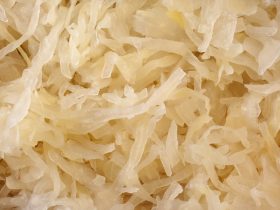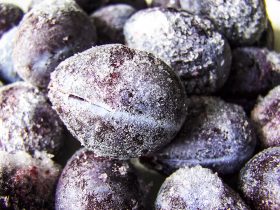Flan, otherwise known by many names such as crème caramel, caramel custard or egg custard is a soft and jelly-like dessert primarily consisting of eggs, milk and sugar. Originating in Europe, flan is now enjoyed all throughout the world owing to the ease in producing it, especially in larger quantities1.
As flan’s primary constituents are egg and dairy, two of the fastest expiring foods, it is vitally important to ensure that you are utilizing the best possible storage methods and devices in order to prevent the flan from spoiling before it has been consumed in its entirety.
Yes, it is our absolute recommendation that home chefs and restaurateurs choose to store their flan in the freezer, as it will otherwise expire quite quickly in other storage vessels. As freezing is practically the only viable long-term option available for storing flan, it is key to follow the proper procedures enumerated in this article.
Can Flan be Kept at Room Temperature?
Once you have cooked flan, it will begin to cool down to the ambient temperature of whatever environment it is left in. This means that as flan begins to cool off from cooking on your countertop, it will also start to develop bacterial and fungal life.

While the flan is still safe to eat and presents no cause to be alarmed within the first two hours, once this period is up, it is possible that the flan may no longer be entirely edible. This is because the temperature of the flan has reached a point wherein the bacteria and fungi may multiply rapidly without hindrance, and as such will produce toxins that are harmful to the human body.
To avoid this, it is best to store flan immediately after it has been cooled. If you have left the flan out in a room temperature environment for over three hours, it is wise to be cautious should you still wish to eat it.
Can Flan be Kept in the Refrigerator?
Flan may be kept in the refrigerator in the event that you will consume it within the next two or three days. If it is kept any longer than this period, you may find that it has begun to show signs of spoilage.
Refrigerating the flan will require a suitably air-tight container free of any odors that the flan may absorb.
Simply place the flan within the container, leaving approximately half an inch of empty space between the surface of the flan and the containers’ cover. Store this container far away from any direct sources of light as well as areas that experience rapidly moving air, such as that of a fan or vent.
Keep in mind that if any other toppings or ingredients are stored within the same container as the flan, it too will spoil once the flan’s shelf-life has been surpassed. This is due to microorganisms migrating to other sources of food once the flan has been colonized.
Things to Keep in Mind when Freezing Flan
When choosing to instead freeze flan, it is a good idea to keep in mind the fact that flan is best consumed immediately after it has been baked. While flan itself can stand up to the rigors of freezing quite well, all food suffers some level of degradation when placed in the freezer, especially for extended periods of time.
Apart from the minor loss of quality in texture and taste, flan will also suffer from freezer burn or cracking of the surface in the event that it is stored improperly or is otherwise frozen and thawed repetitively.
Certain products that are added to commercially purchased flan will also affect its nature when placed in freezing temperatures. If you have purchased your flan from a market or bakery instead of baking it yourself, it is possible that certain preservatives and additives will react differently to being frozen as opposed to if the flan were home-made.
How to Freeze Flan
In order to freeze flan, first allow it to cool down to room temperature by either leaving it on the counter or placing it uncovered within the refrigerator for several hours. This step is done in order to prevent condensation of steam within the freezer and by extension the flan’s storage vessel.
Allowing the flan to cool will also help prevent cracking of its surface that may occur when it is placed in rapidly differing temperatures.
After the flan has been sufficiently cooled, divide it into your desired serving portions and then wrap it in wax or parchment paper. Be careful as this may cause the flan to break.
Once swaddled in wax or parchment paper, wrap the flan once more in plastic cling wrap, ensuring that there are no open spaces for air to enter through. After wrapping all the pieces of flan in plastic wrap, place the pieces in a resealable plastic pouch or freezer bag.
Push out as much excess air from within the bag as possible before resealing it and placing it in the deepest part of your freezer.
Though flan will harden to a tougher consistency once frozen, it is still best to ensure that the flan is placed in such a way that it will not be deformed and crushed beneath other frozen products within your freezer.
If stored properly, the flan will last up to three months.
How to Reheat Frozen Flan
Thawing frozen flan is relatively easy, though it comes with a single drawback – choosing to defrost your flan will take several hours.
Simply remove your desired amount from the freezer and leave within the refrigerator for several hours. This may be accelerated by leaving it at room temperature, though this will cause the flan to thaw unevenly, often resulting in a soft outer layer with a center that is still frozen solid.
References
1. Oxford English Dictionary, 2nd Edition (1989); Petit Robert 1973
2. Unknown author. (2005) “Food Shelf Life Guide” Food Marketing Institute, Washington, DC 20005 with the cooperation of Cornell University, Institute of Food Science, Cornell Cooperative Extension





Hi, I'm Dom
Dom Eats was started to help other people fall in love with food. While cooking can feel intimidating, it doesn't have to be.